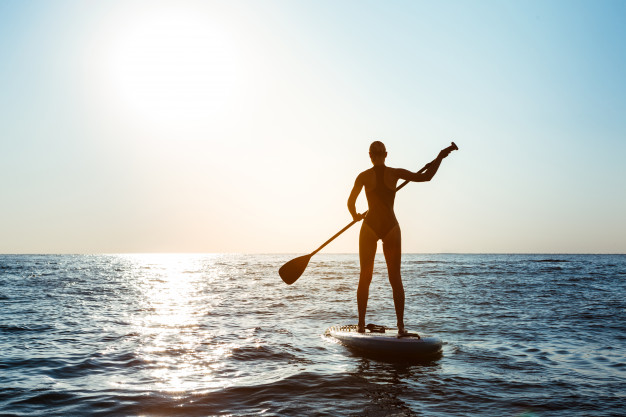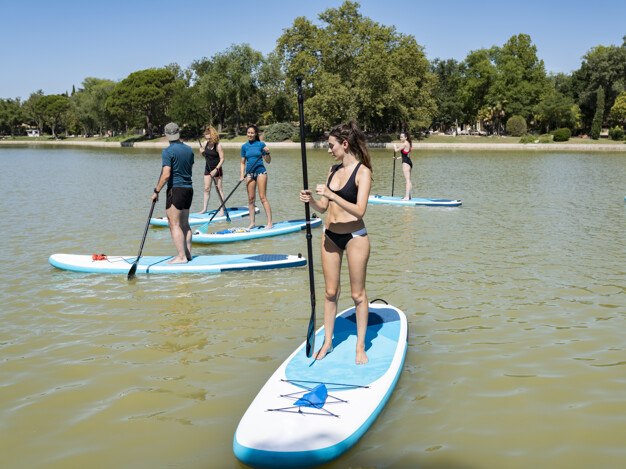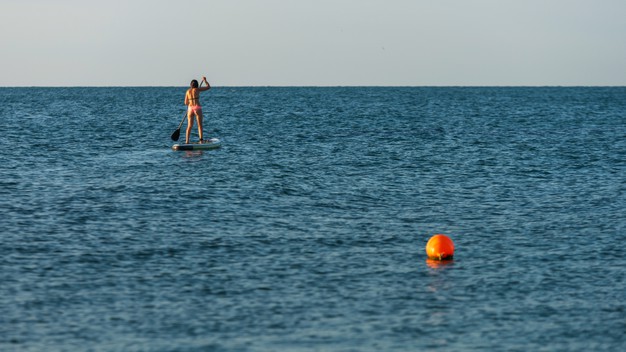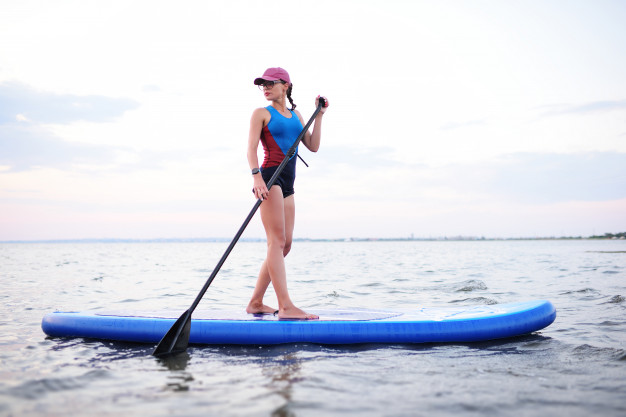
Stand-up paddleboarding (SUP) has emerged as one of the most popular water sports of the last decade. By 2013, SUP had the highest number of first-time participants of any water-based sport in the United States. With 43 percent of the participants being female, it is safe to say that SUP is an enjoyable and effective workout option for people of all genders, ages, and backgrounds.
So, if you’re one of the many people planning to take up stand-up paddleboarding in 2024, then you should know some of the tips and techniques that will allow you to paddle safely, effectively, and comfortably no matter where you are.
Almost any water body – including lakes, outdoor pools, rivers, and oceans – can be used for stand-up paddleboarding. However, when you are just starting out, it is best to opt for the calm and gentle waters of a local lake or reservoir. You can branch out to the more adventurous options when you gain greater mastery over the sport.
There are certain rules that can help you advance your skills quickly while getting the most out of your SUP workout sessions. If you can keep these simple rules in mind when practicing on your paddleboard, you will soon be ready to glide through ocean waters in distant corners of the planet and have the adventures you always dreamed of.
The Golden Rules of Stand-Up Paddleboarding
Some of the golden rules of SUP, that will help keep you safe and jubilant on your paddleboard, are as follows:
Engage Your Core

One of the most important rules of stand-up paddleboarding is that you must utilize all of your core muscles whenever you’re paddling. Your core muscles comprise primarily of your abs and lats. The lats, also known as the latissimus dorsi muscles, connect your arms to your spinal cord.
Properly using your core muscles will enhance the strength and efficiency of your paddle strokes. As a result, you will be better equipped to deal with challenging situations in the water. You will also be able to spend more time on your paddleboard, without feeling any additional fatigue. Avoid using only your arms as this can tire you quickly.
To properly engage your core during SUP, you will have to rotate your shoulders and hips with every stroke. This will allow you to engage larger muscle groups than those found in your arms. Engaging the core muscles adds a much greater source of power. As a result, your paddleboarding experience will be safer and more enjoyable than average. It will also provide better exercise and help you stay in shape in the long run.
Proper Posture and Position

By assuming the proper posture when paddling, you will be able to get the most physical benefits out of your SUP routine. You can begin by assuming the “ready” position the moment your board hits the water. In this position, your knees will be slightly bent, your back straight, and your feet shoulder-width apart.
The bent knees will help absorb any shocks caused by rough waters and sudden waves, thus keeping you balanced on your paddleboard. On the other hand, keeping your back straight will protect you from back injury by engaging your core muscles and minimizing the strain on any single muscle group. Also, when you stroke, plant the blade fully in the water. This has to be applied every time you stroke. This gives you the most power in the most efficient manner. With the blade fully planted in the water, this can also stabilize you making the blade serve as a brace.
While paddleboarding, keep the board as quiet as possible. A quiet board means it will be efficient in the water, so it helps if you can maintain it. Think about engaging the muscles of your lower feet and legs. Not only can it make your board quieter as you go along, but it will also keep your balance.
Lastly, keeping your feet apart will add some flexibility to your posture, helping you maintain your balance when a large wave hits your paddleboard. For the best results, you will need to keep moving your feet gently from side to side, in order to get accustomed to the rocking of the paddleboard.
Wear a Quality Leash

Using a high-quality leash along with your paddleboard is the third golden rule of SUP, although it might just be the most important. A standard, 8-inch coiled leash can potentially save your life if you ever happen to fall into the water. Hence, it is considered to be an essential piece of safety equipment in this sport. You can check Gilisports for more paddleboarding gears and accessories.
One end of the leash is attached to the paddleboard, while the other end is wrapped around your ankle. In other words, the leash connects you to the paddleboard, and it will prevent you from being separated from your board and carried off by the currents if you ever fall into the water.
The only exception to this rule is when you are paddleboarding on whitewater rapids because in that case the leash can easily get snagged on a rock or a branch. In those situations, you must make doubly sure that all the other SUP equipment is in pristine condition and of the highest quality, in order to maximize safety.
Know Where to Go

The best place to stand-up paddle is where you have protection from wind and waves. You must have good access points for launching and landing and minimal boat traffic. If you happen to want to venture into water that is not protected from wind and waves, make sure you are comfortable in swimming as this could make you go further from the shore.
Conclusion
If done properly, stand-up paddleboarding can be a fun and exciting way of getting your daily dose of exercise. To get the most out of this amazing sport, however, you will need to put in the time and effort required for some rigorous practice. You’ll also need to learn the fundamental rules of the sport and invest in high-quality SUP equipment, to ensure your safety in the water.












